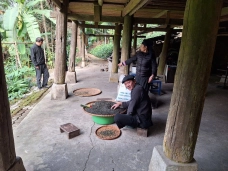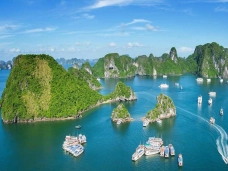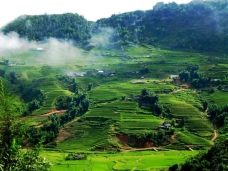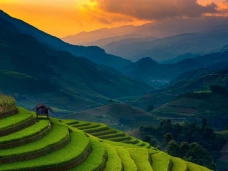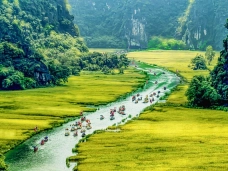Hà Nội - A Millennium of Cultural Heritage
22-03-2024 16:24
Location
Highlight Image
History of Hanoi
Hanoi has a history of formation and development that dates back over 1000 years, starting from 1010 when King Ly Thai To chose Dai La as the capital and renamed it Thăng Long, meaning "Ascending Dragon." Throughout the Ly, Tran, Le, and Nguyen dynasties, Hanoi has always been the center of political, cultural, and educational activities, closely associated with many significant historical events of the nation.
Cultural Characteristics
The culture of Hanoi is an intersection between tradition and modernity, where ancient Eastern culture blends with Western influences. From special dishes like pho, bun cha, egg coffee to traditional festivals like the Saint Giong Festival and Dong Da Festival, Hanoi captivates with its diversity and richness.
Historical Sites
Thang Long Imperial Citadel: A UNESCO World Heritage site, featuring the Hau Lau, Doan Mon, and the Flag Tower, preserving many important artifacts and historical objects.
Temple of Literature - Quoc Tu Giam: Built in 1070, it is the first university of Vietnam, where Confucius, sages, and educators are worshiped, and also the site of the first university examinations in history.
Hoan Kiem Lake: Not only a symbol of Hanoi but also a place full of legends, with Ngoc Son Temple, But Tower, and The Huc Bridge being major tourist attractions.
Hoa Lo Prison: Formerly used to detain revolutionary fighters and later American pilots during the war, it has now become a historical museum.
Old Quarter of Hanoi: With 36 historical and culturally rich streets of ancient Thang Long, where each street tells its own story about the traditional crafts of the local people.
Museums on Culture and Nature
Vietnam Museum of Ethnology: Displays the diverse culture of 54 ethnic groups across Vietnam. The museum not only has indoor exhibits with valuable artifacts but also a large outdoor area, recreating the traditional architecture of the ethnic groups.
National Museum of History: Preserves important artifacts related to the history of Vietnam from prehistoric times to the end of the Nguyen dynasty. The museum is not only a place for conservation but also for research, restoration, and introduction of the nation's rich history.
Vietnam Museum of Fine Arts: Displays artworks from various periods, including traditional arts, modern and contemporary arts. It is an ideal place to explore the development of Vietnamese painting, sculpture, and crafts.
Hanoi Museum: With its unique inverted pyramid architecture, it displays artifacts and documents related to the history and culture of Hanoi from its earliest days to the present. The museum provides a comprehensive view of the capital's development over the periods.
Vietnam Women's Museum: Honors the position and role of Vietnamese women in history and society. The museum exhibits artifacts, documents, and performances related to the life, struggle, labor, and creativity of Vietnamese women through the ages.
Ho Chi Minh Museum: Preserves and displays many artifacts related to the life and career of President Ho Chi Minh. The museum not only helps people and tourists understand more about the life of the beloved leader but also about the history of the nation's struggle for independence.
Vietnam Museum of Nature: An attractive educational site that displays a wide range of biodiversity, geology, and natural phenomena of Vietnam. This museum is located within the premises of the Vietnam Academy of Science and Technology in Hanoi.
Hanoi is not only an ideal destination to explore the history of Vietnam but also a place to experience the vibrant urban life and distinctive culinary flavors. Whether day or night, summer or winter, Hanoi always has a peculiar allure, making anyone fall in love once they get close.
Similar destination
14-04-2024
Hạ Long - A World Natural Heritage
22-03-2024
Moc Chau, Son La Province
22-03-2024
Mai châu - Hòa Bình
22-03-2024
Dien Bien - History and Culture
22-03-2024
Thanh Hóa Province – Culture and History
22-03-2024
Ninh Bình – History and Culture
22-03-2024







